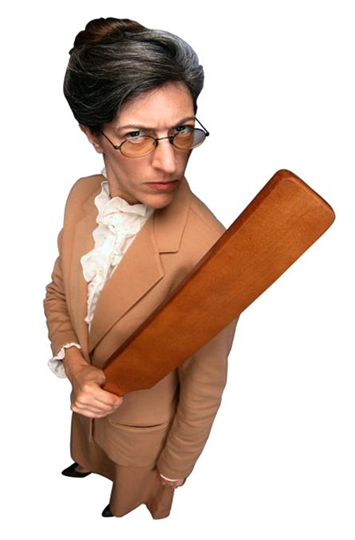
Were you ever disciplined in grade school?
As a small kid in first grade, I was sitting in a circle on the gym floor with my classmates at Chouteau Elementary School in Tulsa. Although I cannot remember the purpose of setting on the gym floor in a circle, I do remember the kid next to me hitting me in the arm with his fist – and for no reason – and it hurt!
I did what most normal boys at that age would do, I clinched my fist and hit him in the arm. Except my punch might have been just a little harder and he laid down on the floor putting on an act like a professional wrestler. The problem was our gym instructor, Mr. Gooch, only observed me hitting my classmate.
The Wooden Paddle
In the early 1970’s, schools used physical discipline in the form of a wooden paddle. And everyone was terrified of Mr. Gooch and his extra large paddle. Mr. Gooch was so tall I could hardly see his face. At least that’s what it seemed like as a first grader. He took me to the hallway and told me to bend over and grab my legs. I was terrified.
He stretched back like tennis pro Roger Federer and hit the sweet spot right on the money. My fanny was on fire.
That’s the extent of my memory of first grade. To this day I don’t remember anything about that year in school except that spanking.
Discipline at Work
By the time we finish our education and begin our careers as adults, we don’t need a Mr. Gooch in the office looking for someone to make a mistake so he can use his extra large wooden paddle on our butt while we bend over grabbing our legs.
Yet, I have observed companies treat their employees like grade school students; monitoring attendance, bathroom breaks, and recording times when employees are late in the morning or after lunch. Break too many rules and here come’s the dreaded meeting with your supervisor and HR. Your swats come in the form of written warnings, suspensions, and even termination.
Leaders as Coaches without a Paddle
We should treat employees like adults. Grown men and women pursuing their career should not be afraid of making a mistake because mistakes will happen and adults learn from the experience, making them a better contributor. Leaders should be coaches without a paddle. When an employee makes a mistake, a leader should not discipline the employee. Turn it around. It should be a time of learning. Here is my advice:
#1 Discuss – Talk about what happened in a casual, open, non-confrontational manner.
#2 Counsel – Provide advice and direction to prevent future issues.
#3 Coach – Make sure the employee knows you support them as a team member.
#4 Motivate – Understand the potential talent of an employee and help them grow by providing positive feedback.




